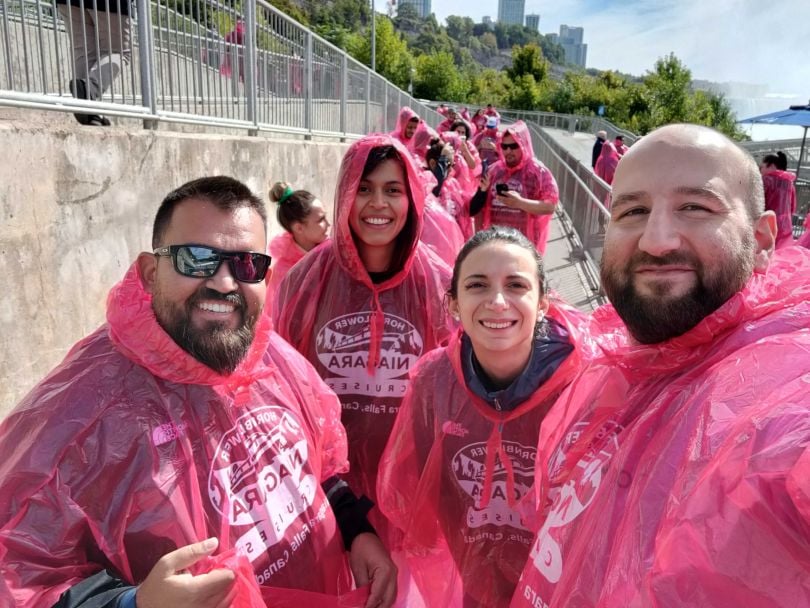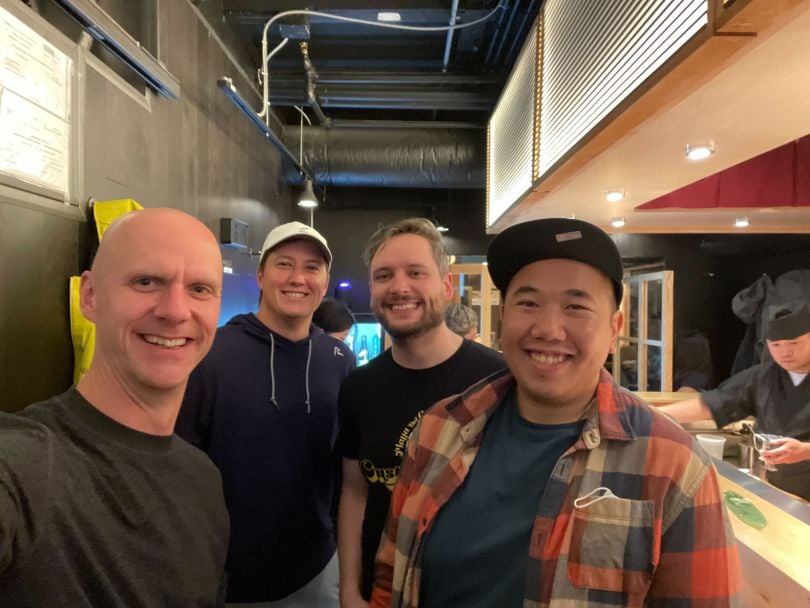What does the phrase “rock tumbles” have to do with product proposals, executive briefs and process change pitches?
According to Group Product Manager Lynn Jane Ho, the answer is “everything.” She and her peers at Customer.io take part in weekly “rock tumbles” to refine ideas, identify weak spots and help each other strengthen their communication and storytelling skills.
Ho explained that the first 20 minutes is reserved for reading and writing comments directly into a document, while the remaining time is open for discussing any of the comments further.
“It’s both humbling and empowering to send work through the ‘tumble,’” she said. “You’ll easily get more than 100 well-meaning comments asking for more context, data or story to make the overall writing stronger.”
For Ho, cultivating a healthy team culture is the key to building exciting solutions and helping fulfill the company’s vision of enabling marketers to deliver the right message at the right time.

Another thing that leads to more effective solution development? A focus on decision-making rather than productivity, said Head of Product Design Aiden Bordner.
“The goal state is a culture of continuous learning and questioning one’s convictions, even in the middle of the build,” Bordner said. “Building a culture of efficiency isn’t valuable if you’re quickly shipping the wrong thing.”
But even the most thoughtfully orchestrated projects will experience the occasional setback. In order to ensure his team learns from mistakes, Bordner and his colleague, Software Engineer Vinicius Araujo, focus on cultivating psychological safety.
“Leaders should aim to create a space for people to connect and grow together,” he said.
Building a new product from scratch in six months is no simple feat.
Just ask Araujo. While his team was initially concerned about ensuring seamless integration between the company’s existing marketing automation platform and its new customer data platform, called Data Pipelines, this undertaking proved successful.
Technical chops were just one element that brought Data Pipelines to life. A supportive team culture sealed the deal.
“People must feel comfortable adapting to change, which is only possible in places where people feel safe taking risks,” he said.
“People must feel comfortable adapting to change, which is only possible in places where people feel safe taking risks.”
Over the past 20 years he’s worked in the tech industry, Araujo has hoped to see more companies encourage experimentation. He fosters a sense of safety on his own team by communicating openly and honestly, but also respectfully.
“It’s important to ensure no one is afraid to ask questions or make mistakes due to predicting negative reactions from your team members,” Araujo said.
In addition to safety and transparency, Araujo believes in autonomy and the ability to work asynchronously — but not at the expense of collaboration.
“Being asynchronous doesn’t mean we work in silos,” he said. “We have an extremely collaborative team.”

Bordner believes that the best products come from opposing perspectives.
That’s why his team considers all different points of view when developing new technology, something that’s only possible in a trusting environment.
“In product design, this manifests itself in behaviors like sharing work early and often, taking feedback from anywhere and generally remaining open-minded and curious when encountering new ideas and information,” he said.
Teamwork came into play when Bordner’s team recently started building data pipelines. He and his peers chose to develop the product as a separate app as part of a plan to break down their codebase into smaller, discrete systems and chose to develop the front end in React. But as the project progressed, the team realized the data pipelines needed to fit into a shared experience with the company’s platform, Journeys.
“This was a challenge,” Bordner said. “We not only needed to redesign the navigation to allow switching between apps, but we needed to engineer a solution to unify both Ember and React-based UI into a single experience.”
Ultimately, Bordner’s team created a new app that would serve as a “wrapper” for the others called Hydra, which hoists account level concepts, passes data between subordinate apps and more.
“Hydra is the technical foundation of our platform strategy, allowing us to build discrete products, yet deliver them in a customer experience that feels like a single page app,” Bordner said.
To unwind from such an intense technical project, Bordner’s team engages in a monthly social hour, during which they play online games, such as Skribbl.io or VR mini golf.
These efforts drive camaraderie and underscore Bordner’s belief that building a collaborative team is just as important as developing great software.
“It’s easy for leaders to fall into the trap of focusing mostly on delivery and product strategy instead of what you’re really building, which is an organization of people,” he said. “If you’re not focused on building healthy teams that can grow, scale and eventually lead themselves, it’s pretty hard to succeed over time.”
SEEKING PASSIONATE PEOPLE
According to Bordner, Customer.io isn’t focused on headcount-driven growth, but is instead searching for people to join its ranks who embrace ownership and can drive their own outcomes. As the company strives to bring a greater level of design consideration to B2B software, Bordner’s team aims to hire individuals who can realize this vision. “In product design, the attributes that make successful candidates are an appetite and appreciation for complex problems and a passion to bring real care and craft to business software,” he said.
As the work Ho’s team accomplishes at Customer.io has evolved, so too has her understanding of culture.
“Diversity, work-life balance and remote work aren’t exactly developing trends, but they’re also not a given,” she said. “I’ve been fortunate to see these priorities be successful alongside growth, ambitious OKRs and innovation at Customer.io.”
A strong culture allows Ho and her team to stay focused on their mission of making it easier for customers to send personalized push notifications and in-app messages using Customer.io’s mobile software development kits. Besides adding new features and improving the performance of mobile SDKs, Ho explained, her team recently partnered cross-functionally with marketing, data, finance and billing teams to bring unlimited push and in-app messages to all new and existing customers.
“This made costs more transparent and predictable to current customers, made our product more attractive to new customers and allowed us to become more efficient internally,” she said. “It’s a rare win-win in pricing and packaging that we’re excited to celebrate.”
According to Ho, curiosity is the driving force behind the work her team accomplishes. By continuously asking “why,” approaching problems with an open mind and seeking the root cause of issues, her team sees the bigger picture more quickly.
“A healthy team culture means being able to build exciting and challenging things that fulfill a larger company vision alongside happy and fulfilled colleagues,” she said.









